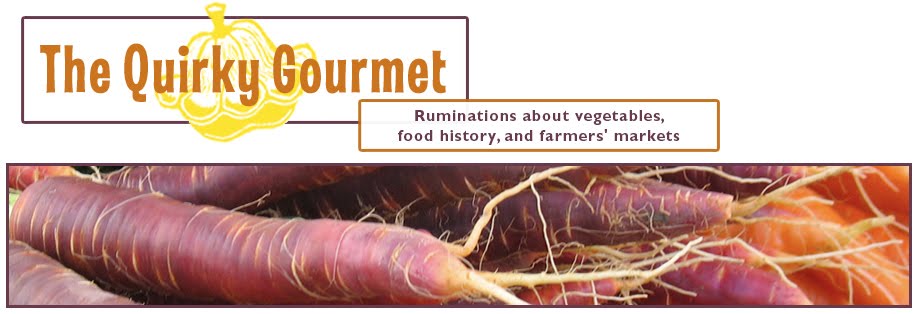
I just finished reading Francis Moore Lappe's Getting a Grip. It wasn't what I expected, from the glowing reviews I'd seen. ("She's done it again!")
The book's premise is that we can come to terms with our fears about the future by finding concrete entry points to start making changes. It wasn't that I disagreed with anything she said. I just craved some new insight, and I didn't find it here.
I'm a big fan of Lappe's Diet for a Small Planet. I didn't even read it until a few years ago, but its central idea--that there is enough food to go around, we just feed too much of it to livestock--had long been familiar to me by the time I cracked the its cover, no doubt because the book had such a strong impact on my generation.
There was an editorial titled "Grains Gone Wild" in today's New York Times by the economist Paul Krugman. He explains the current global food shortages as being caused in part by the rising standard of living in China, which has enabled more people to eat more meat, as well as by the the widespread cultivation of corn for ethanol and the rising price of petroleum products because of the war in Iraq. At the end of the article he calls for increased food aid for poorer nations, as well as a rethinking of policies promoting the use of biofuels. Not a word about eating less meat.
I'm afraid that we have a huge collective blind spot when it comes to our consumption of meat, even though many of us intellectually understand the connection between meat-based diets and food scarcity. Sustainably raised meat is one solution, in fact, virtually every argument I've ever heard for switching to a vegtetarian diet is weaker when you're eating grass fed and sustainably raised animals rather than livestock from feedlots. But there just isn't enough grass or space on the planet for everyone to eat sustainable meat on the same scale that we've been eating industrial meat. At some point we're just going to have to face the fact that we need to eat less meat.
I'm not a vegetarian, although I don't eat a lot of meat. Francis Moore Lappe isn't a vegetarian either. In the introduction to the 20th anniversary edition of Diet for a Small Planet she explains that she eats small amounts of meat, as a flavoring or as a component in a larger dish. As she explains, this is how most people have eaten for most of our history.
My business makes only vegetarian food. For the past twelve years I've been selling vegetarian food at farmers' markets, listening to people's comments when they learn that my food has no meat. Seattle is a pretty enlightened city, but I still encounter ambivalence--and sometimes outright hostility--virtually every day. I tell people that you don't have to be vegetarian to eat vegetarian food, just like you don't have to be Thai to eat Thai food, but many folks just aren't convinced.
I do a lot of work with vegetarian organizations. I deeply admire the activists I know who dedicate their lives to getting people to stop eating meat, but I'm not sure that this all-or-nothing approach is the answer. Even the groups that treat vegetarianism as a process to be approached in stages still operate with the assumption that the ultimate goal is to get people to give up eating meat, rather than persuading them to eat less.
Meat is a special food. It always has been special for us, even before the emergence of our unique species, homo sapiens. We were scavengers of meat before we were hunters, taking the leavings from other predators who were more skilled or better adapted. But even to our early ancestors, meat was a windfall. It kept its special status, through the generations who learned to hunt, and later among those who first domesticated livestock. In many prehistoric societies, meat was sacred, and only eaten when it was sacrificed to the gods.
I suspect that the most effective way to reduce our collective consumption of meat is to somehow make it sacred again. Its rising cost lately certainly contributes to its longtime status as a special food, a symbol of living well. But that also makes it more desirable. I think our best hope is to somehow rotate that blind spot into our field of vision, to eat less meat as a choice, and also as a necessity, a way to improve our collective odds for surviving as a species.


























